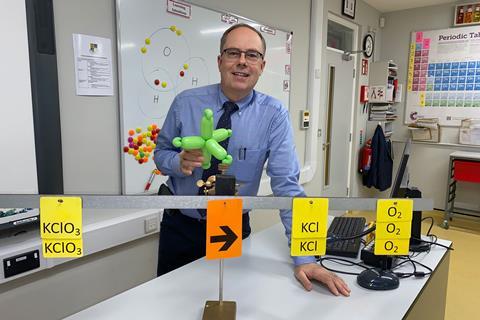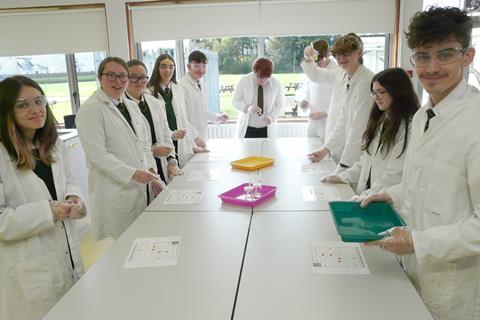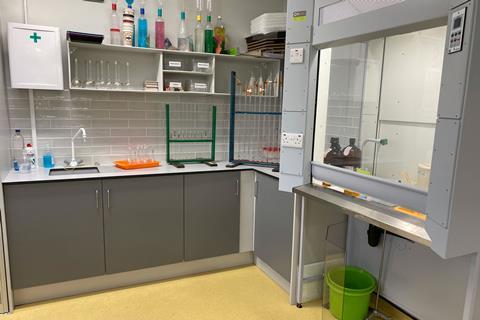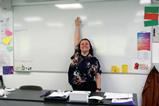Where it’s all about effective learning and practical work

Meet Graham Hewston, who teaches at St Clare’s Comprehensive School in Manorhamilton, County Leitrim – a small town between Sligo and Enniskillen. He’s been teaching there for more than 30 years since graduating with a degree in natural sciences, followed by a higher diploma in education from Trinity College Dublin. The school was built over 50 years ago and serves a rural area with a student population of more than 500 pupils.
What do you teach?
I can teach Junior cycle science which, in the Irish curriculum, is assessed at a common level with units on the Nature of science, the Biological world, the Chemical world, the Physical world and Earth and space. After completing this cycle, the students can continue with optional science subjects, such as biology, chemistry, physics and agricultural science. St Clare’s offers these senior sciences, and I currently teach chemistry and physics for the leaving certificate examination, which many students would use to get into third level courses in Ireland and the UK.
Tell us about your lab
The school has three labs and a preparation room. We recently had the opportunity to refurbish our classrooms, which were previously like typical school labs from the 1970s. The original labs consisted of large, fixed hardwood benches, with the teacher’s bench at the top of the room on a raised platform. The student benches were set out in three parallel rows with sinks, electrical outlets, gas taps and exposed drainage pipework, which was not ideal.
As a science department we used the refurbishment as an opportunity to consider not only how the existing spaces could be modernised but also how we could use the design to effectively promote learning and teaching. We wanted more than to just give the rooms a much-needed makeover, but also to ensure the labs function as dynamic learning spaces as well as practical laboratories. The architect used our wish list to inform the design, with one major design change: to turn the overall orientation of each lab by 90 degrees to make the teaching wall the longer wall facing the windows. The refurbishment project was completed in under 10 weeks.
Show us your teaching space
Want to share your teaching space? Then email us and your favourite space or display could feature in EiC online and in print.
What’s your new set-up like?
The new lab furniture, surfaces, notice boards and walls are in neutral grey colours, although each lab has a distinctive colour. The windows are south-facing and give the labs a pleasant ambient hue. Each lab now has six serviced storage pedestal units with 12 desks. We move the desks around when needed – we can group eight tables in the centre of the room to create a large workspace, for example. This is great for microscale chemistry activities as the students can make effective use of the large space to share resources and compare their observations.
It was a memorable day when students stepped through the new lab door and gasped at the bright airy space and improved seating with back support.
What do you enjoy most about your refurbished lab?
Many of the practical activities required for the leaving certificate chemistry course involve titrations and a new preparation and distribution area in the corner now accommodates all the necessary volumetric glassware and associated paraphernalia. All the cabling between the PC and the projector is now in underfloor ducting so we no longer need cable mats or trailing leads, which is great. We removed the old raised teacher’s platform, which I’m pleased about, for my own health and safety.
I have a large magnetic whiteboard and I attach colourful magnetic discs to it to explain the particulate theory of matter, balancing equations, various representations of chemical bonding and I also use these as a question prompt for flame colour tests.
A lot of commonly used equipment is now in large units with eye-level storage for easy access. The sliding doors on these units are also finished with a useful pinboard surface. I think the ideal lab is a bit like the non-existence of the perfect gas, but these new changes are definitely a leap in the right direction.


















No comments yet